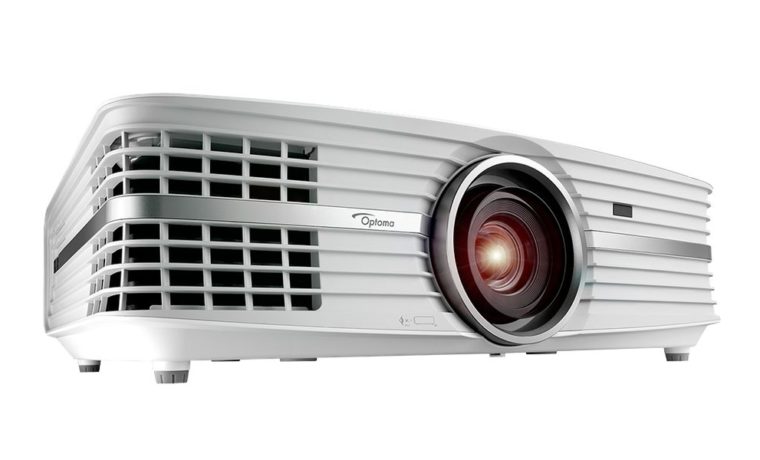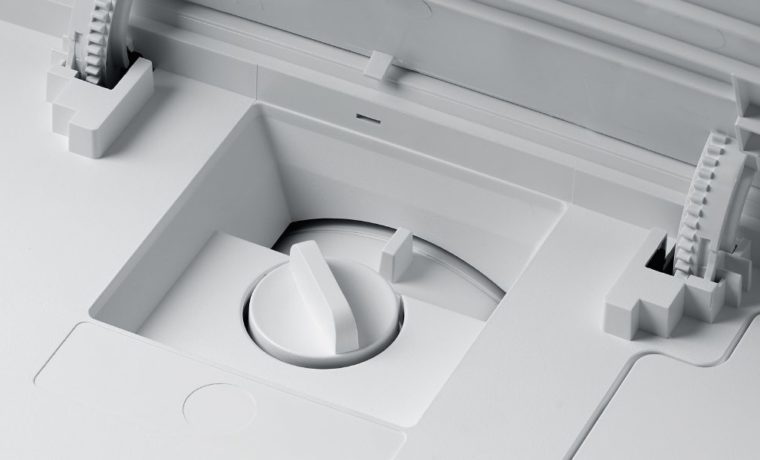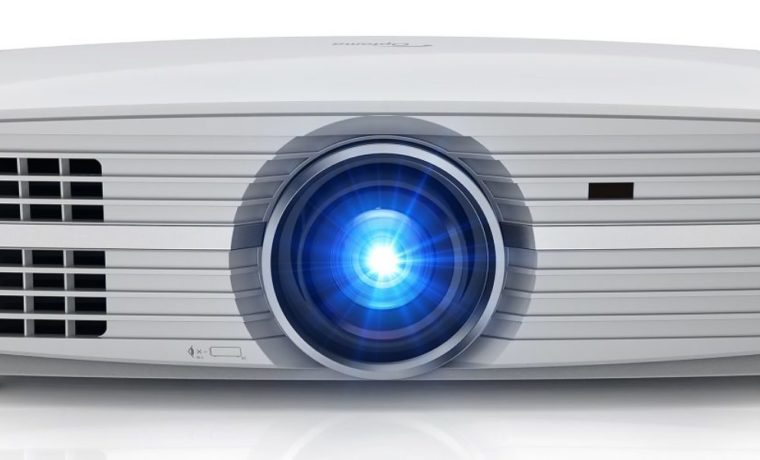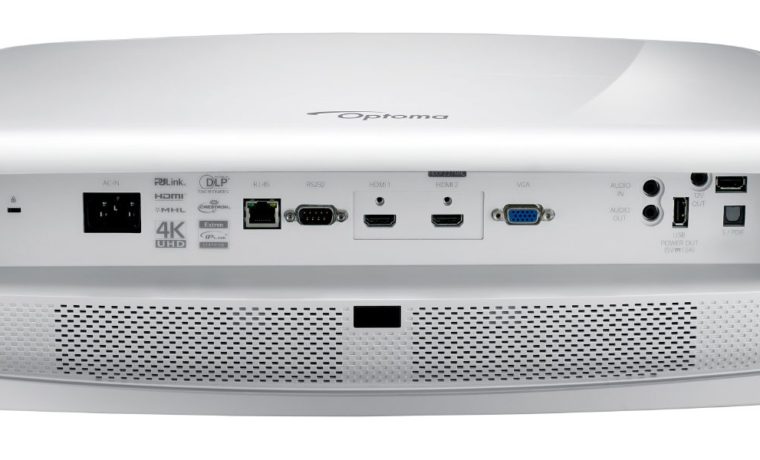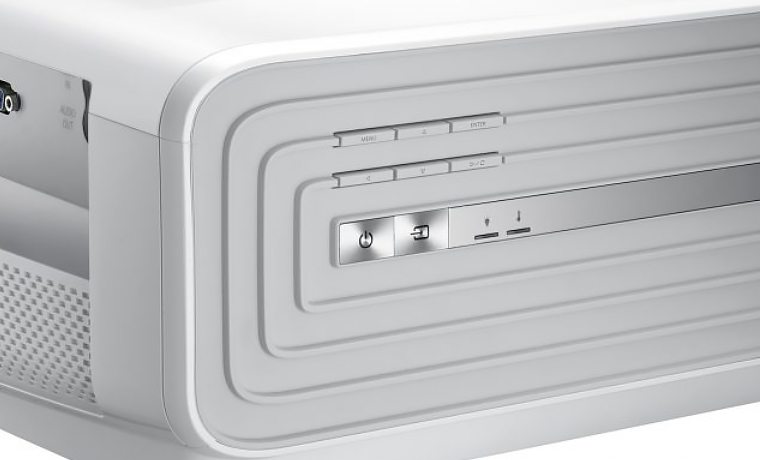Optoma’s goal was to make the control panel nearly invisible. I’d say they were successful. They kept the number of buttons to a minimum. Some companies will add a number of extra buttons for quick access to more features, but, from a practical standpoint, other than installers, we live and die by the remote control.
Again, if you are facing the front of the projector, the control panel is located on the left side, and close to the back.
Normally you would walk right by and not notice the controls, but for the power indicator light. That light will be red if the projector is off, or blue if on, and flashing while powering up or down.
The controls are straight forward, if a little odd for not having the usual diamond shaped (or round) navigation. The top row has the Menu on the left, up arrow in the middle and Enter on the right. Below the Menu is the left arrow, then in the center, the down arrow, and finally the right arrow on the right side.
Still, it’s perfectly functional. What it lacks are any “extras” which is not really a problem, as we all pretty much rely on the remote control.
There are two indicator lights (in addition to the light on the power button (blue for on, red for off/standby).
Below those six buttons are two larger ones, the lit up one is the power button, the source button to its right. That’s all there is, and all that’s truly needed.

